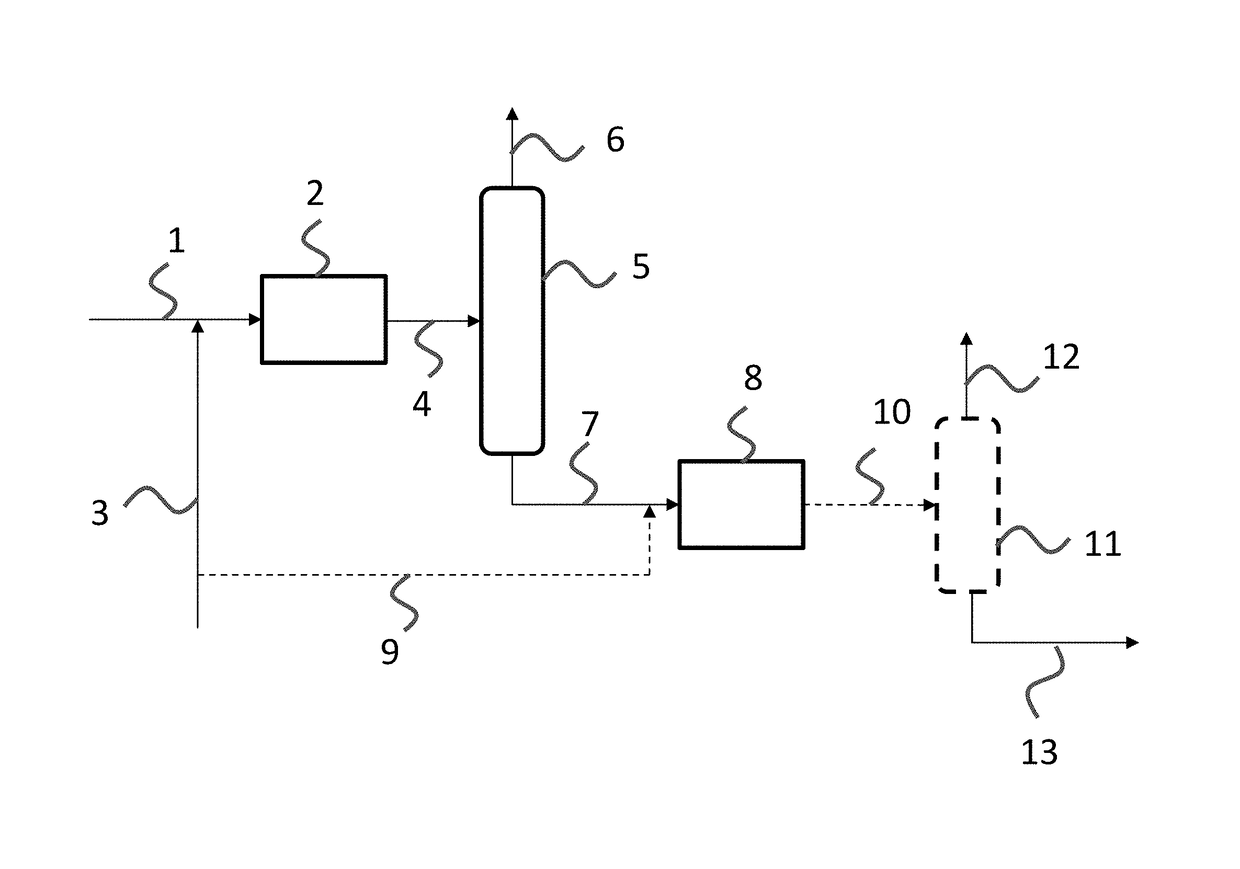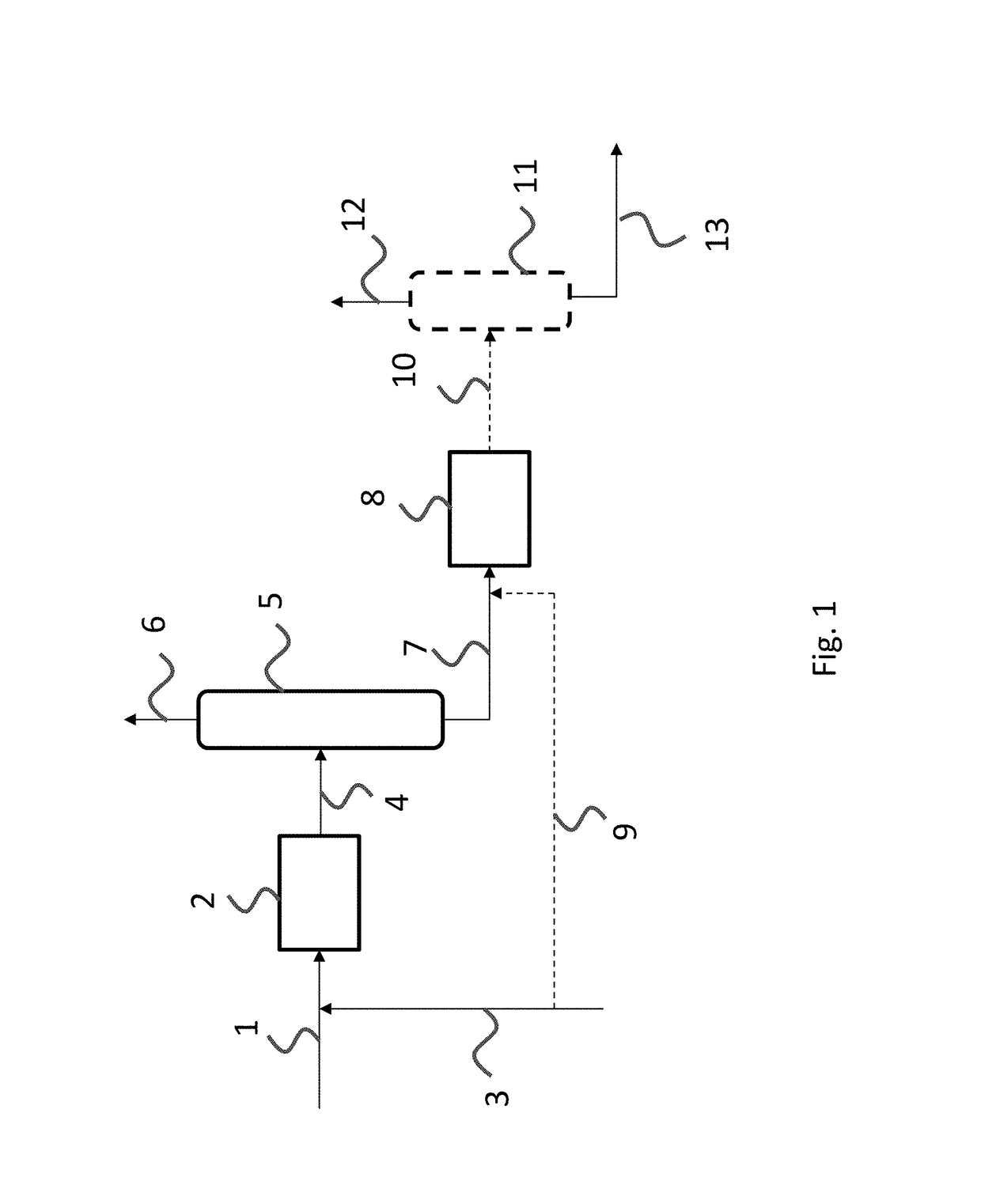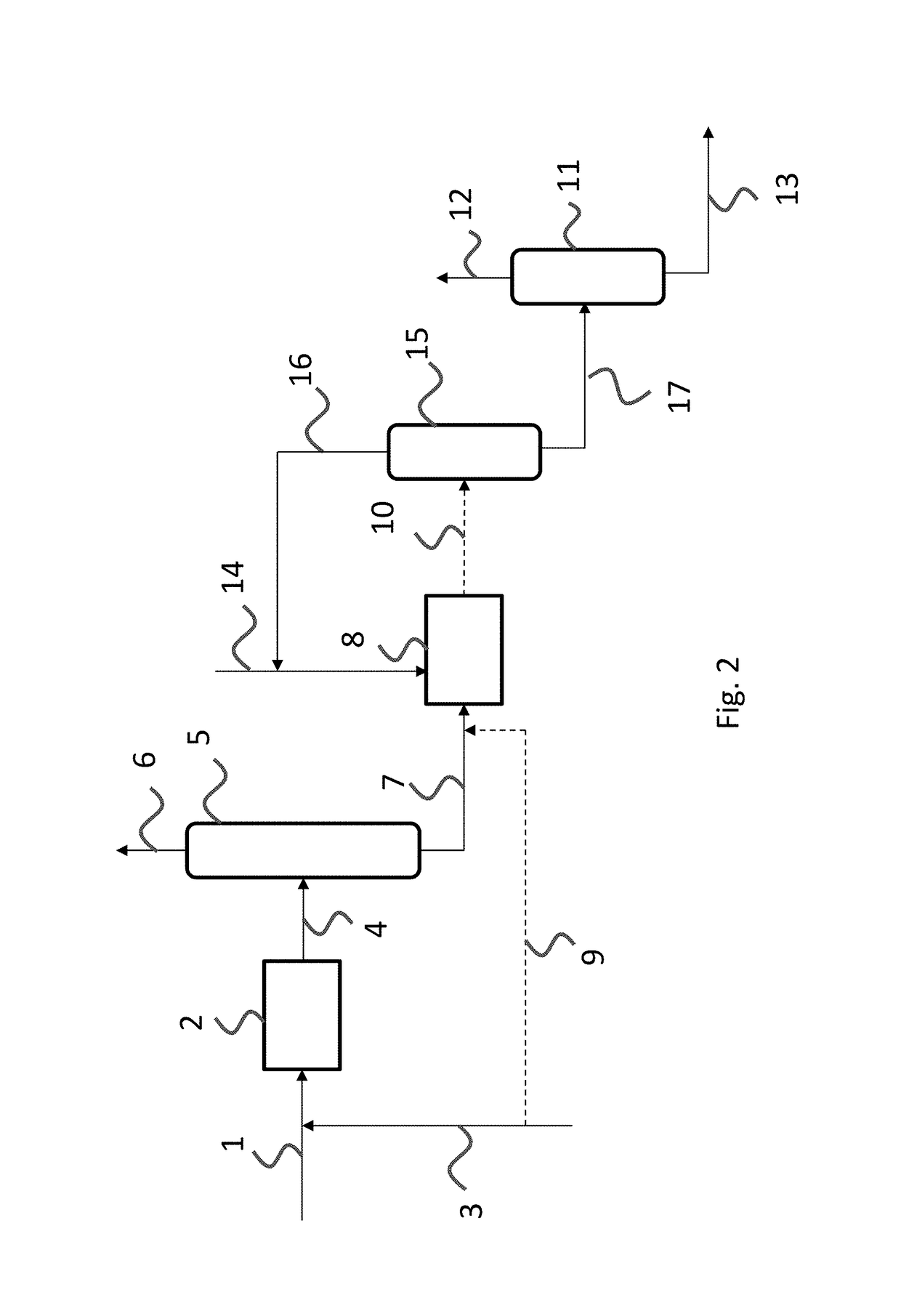Process for producing a gasoline with a low sulphur and mercaptans content
a technology of sulphur and mercaptans, which is applied in the field of process for producing gasoline with a low sulphur and mercaptans content, can solve the problems of large reduction of octane number of gasoline, and over-consumption of hydrogen, so as to reduce operating temperature and/or pressure, reduce octane loss, and increase catalyst service life
- Summary
- Abstract
- Description
- Claims
- Application Information
AI Technical Summary
Benefits of technology
Problems solved by technology
Method used
Image
Examples
example 2 (
In Accordance with the Invention)
[0149]A catalyst B was obtained by impregnating a nickel aluminate with a specific surface area of 135 m2 / g and a pore volume of 0.45 ml / g, using an aqueous solution containing molybdenum and nickel. The catalyst was then dried and calcined in air at 500° C. The nickel and molybdenum content of this sample was 7.9% by weight of NiO and 13% by weight of MoO3.
[0150]The gasoline A1 as obtained and described in Example 1 was treated in the absence of hydrogen on demercaptanization catalyst B at a pressure of 1 MPa, a HSV of 3 h−1 and a temperature of 100° C. After treatment, the gasoline B1 obtained was cooled.
[0151]Table 2 presents the principal characteristics of gasoline B1 obtained.
[0152]
TABLE 2Reference of gasoline treatedB1H2S, ppm by weight0Mercaptans, ppm by weight (as S)8Total sulphur, ppm by weight86Total olefins, % by weight24.6Demercaptanization, %67Olefins hydrogenation, %0
[0153]Thus, carrying out the demercaptanization step (step c) meant t...
example 3 (
In Accordance with the Invention)
[0154]A catalyst D was obtained by impregnation of an alumina with a specific surface area of 239 m2 / g and a pore volume of 0.6 ml / g, using an aqueous solution containing molybdenum and nickel. The catalyst was then dried and calcined in air at 500° C. The nickel and molybdenum content of this sample was 9.5% by weight of NiO and 13% by weight of MoO3.
[0155]The gasoline A1 as obtained and described in Example 1 was mixed with a feed C2 to obtain a feed C3. Feed C2 was a light cracked gasoline which had undergone selective hydrogenation of diolefins and which had an initial boiling point of 22° C. and an end point of 71° C. with a MON or 82.5 and a RON of 96.9. Its sulphur content was 20 ppm by weight, its mercaptans content was less than 3 ppm by weight and its olefins content was 56.7% by weight.
[0156]Feed C3 was obtained by mixing 80% by weight of gasoline A1 with 20% by weight of feed C2. The mixture obtained was a gasoline with an initial boiling...
PUM
| Property | Measurement | Unit |
|---|---|---|
| pressure | aaaaa | aaaaa |
| temperature | aaaaa | aaaaa |
| pressure | aaaaa | aaaaa |
Abstract
Description
Claims
Application Information
 Login to View More
Login to View More - R&D
- Intellectual Property
- Life Sciences
- Materials
- Tech Scout
- Unparalleled Data Quality
- Higher Quality Content
- 60% Fewer Hallucinations
Browse by: Latest US Patents, China's latest patents, Technical Efficacy Thesaurus, Application Domain, Technology Topic, Popular Technical Reports.
© 2025 PatSnap. All rights reserved.Legal|Privacy policy|Modern Slavery Act Transparency Statement|Sitemap|About US| Contact US: help@patsnap.com



